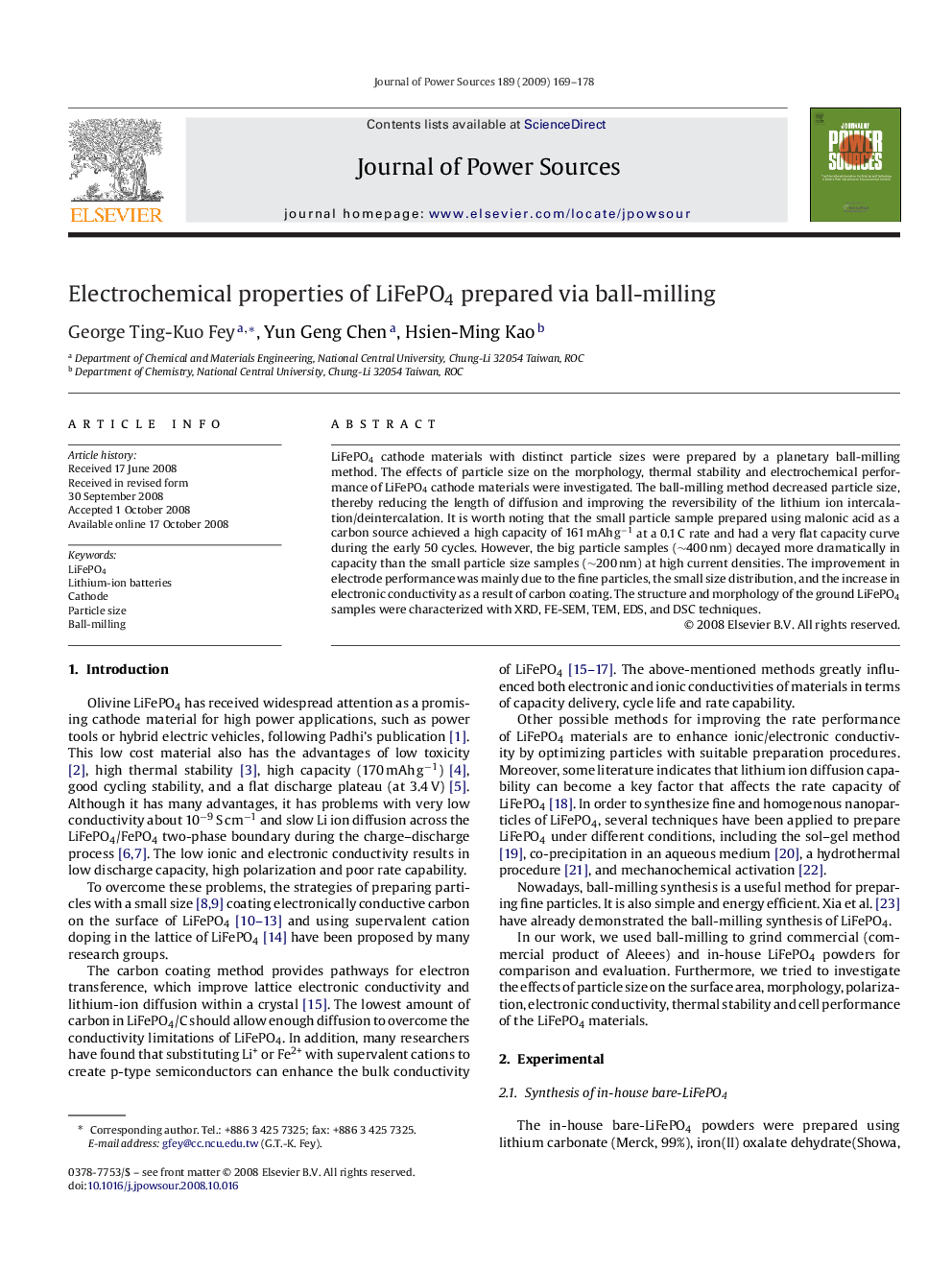| Article ID | Journal | Published Year | Pages | File Type |
|---|---|---|---|---|
| 1291169 | Journal of Power Sources | 2009 | 10 Pages |
LiFePO4 cathode materials with distinct particle sizes were prepared by a planetary ball-milling method. The effects of particle size on the morphology, thermal stability and electrochemical performance of LiFePO4 cathode materials were investigated. The ball-milling method decreased particle size, thereby reducing the length of diffusion and improving the reversibility of the lithium ion intercalation/deintercalation. It is worth noting that the small particle sample prepared using malonic acid as a carbon source achieved a high capacity of 161 mAh g−1 at a 0.1 C rate and had a very flat capacity curve during the early 50 cycles. However, the big particle samples (∼400 nm) decayed more dramatically in capacity than the small particle size samples (∼200 nm) at high current densities. The improvement in electrode performance was mainly due to the fine particles, the small size distribution, and the increase in electronic conductivity as a result of carbon coating. The structure and morphology of the ground LiFePO4 samples were characterized with XRD, FE-SEM, TEM, EDS, and DSC techniques.
